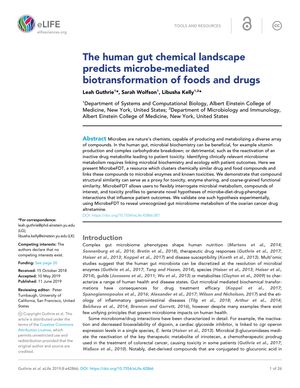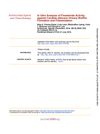The Human Gut Chemical Landscape Predicts Microbe-Mediated Biotransformation of Foods and Drugs
June 2019
in “
eLife
”

TLDR The study developed a tool to predict how gut microbes process foods and drugs, showing that similar compounds often share metabolic pathways and effects.
The document from June 11, 2019, describes the development of MicrobeFDT, a predictive tool for understanding how the human gut microbiome metabolizes compounds in foods and drugs. The study involved organizing around 10,000 compounds and creating a network to connect compound structure, enzyme function, taxonomy, and toxicity. It was found that compounds with higher structural similarity are more likely to share metabolic enzymes and toxicity, as shown with the drug altretamine and the contaminant melamine. The study also explored the metabolism of altretamine by gut microbial N-demethylases, which could lead to toxicity, and the antimicrobial properties of bile acid-like compounds on the microbiome. The research introduced the ECSD score to quantify enzyme-specific taxonomic dominance and diversity, and while the tool has limitations, such as not considering compound concentrations, it is valuable for investigating interactions between diet, drugs, and the microbiome. The study included an experiment with fecal samples from three healthy adult men to validate the microbiome turnover of altretamine. The strength of the study's conclusions is not assessable based on participant numbers, as the number of people involved in the study was not specified.





